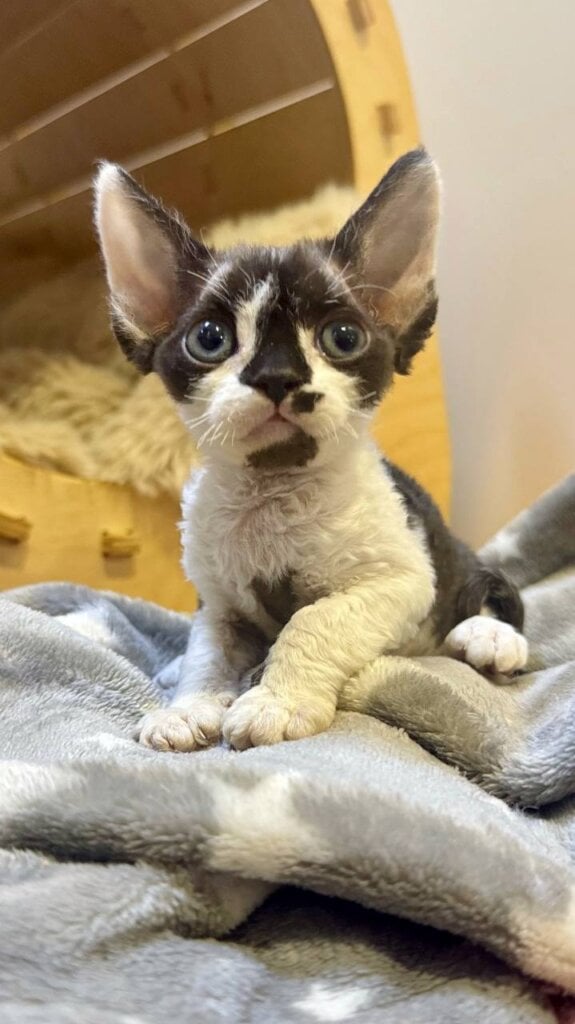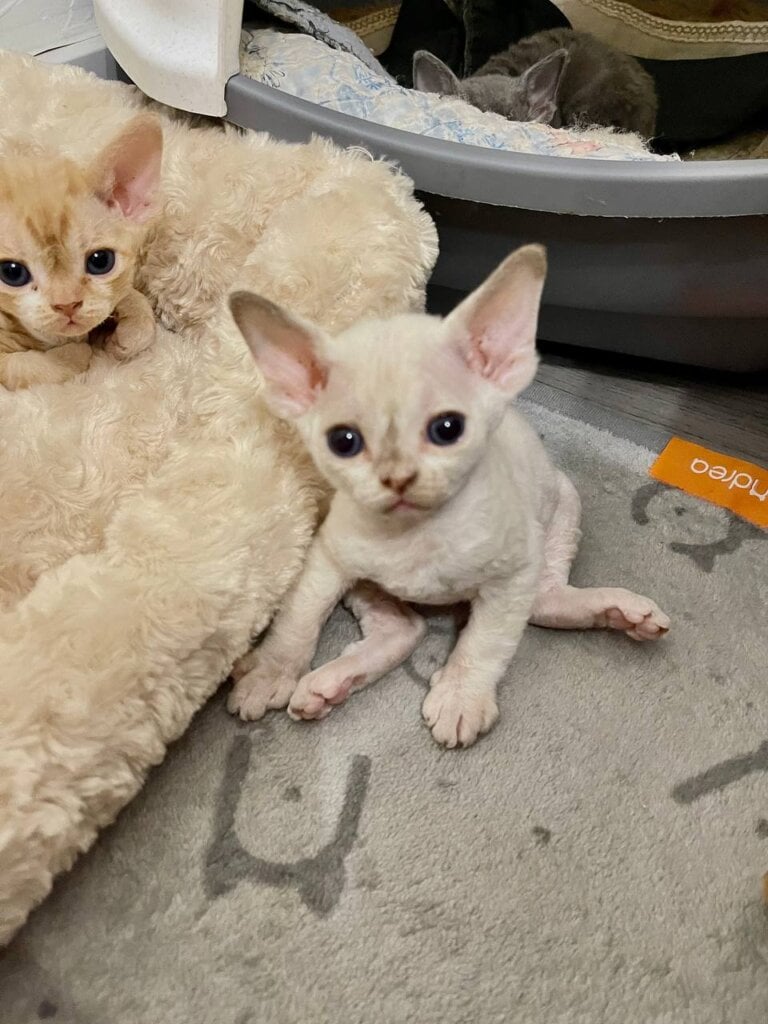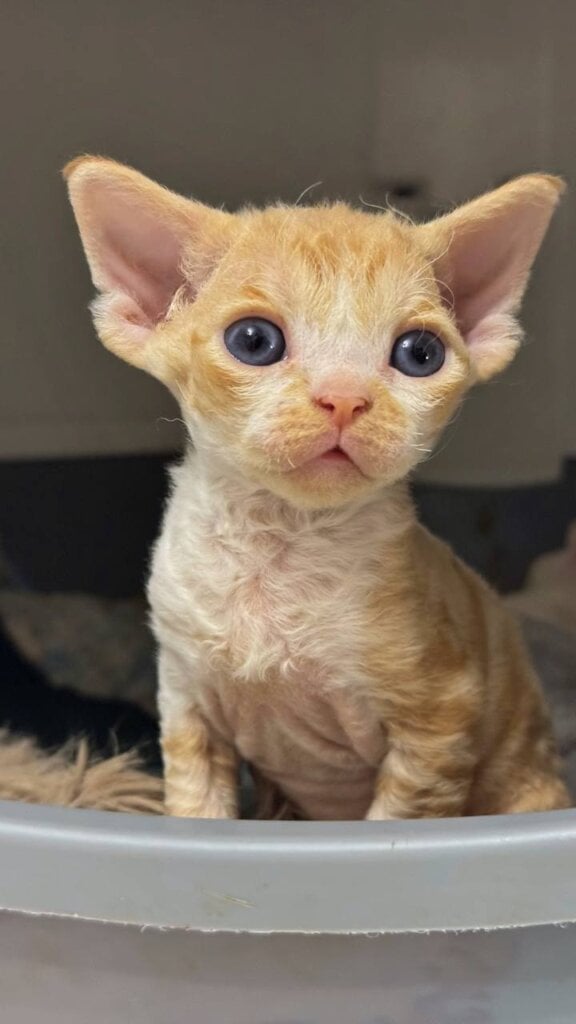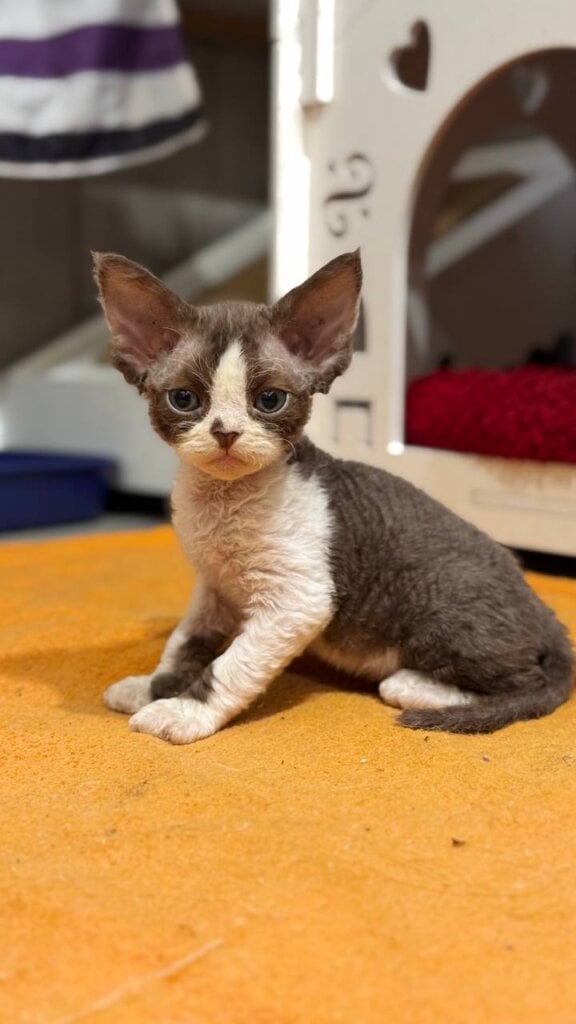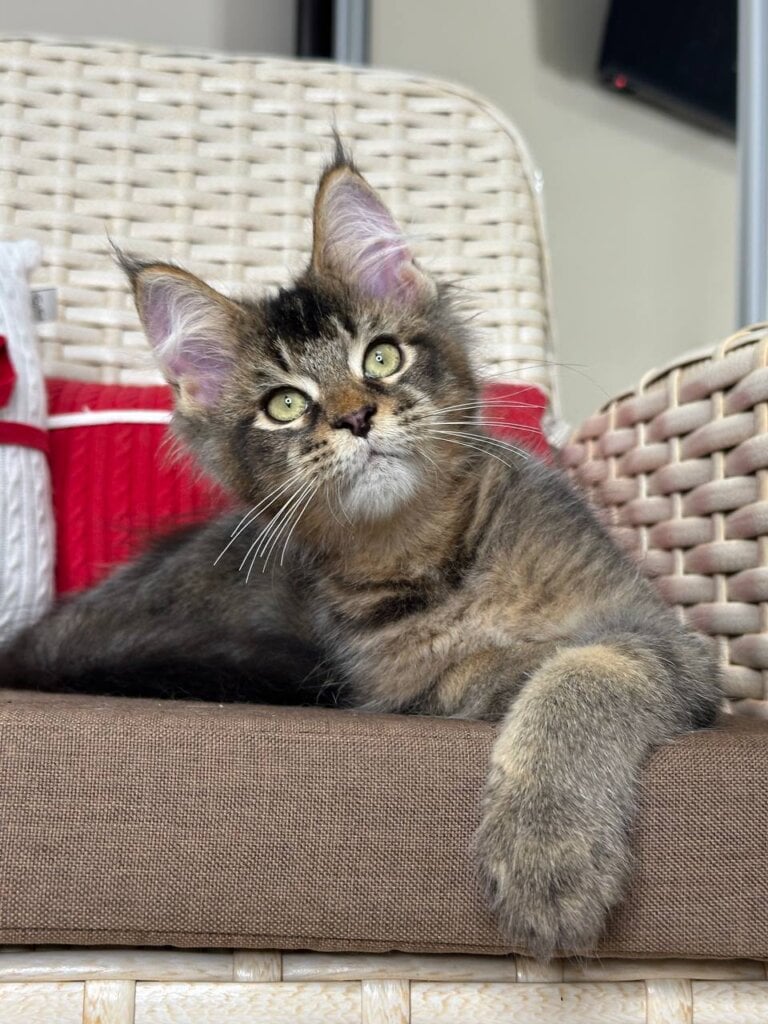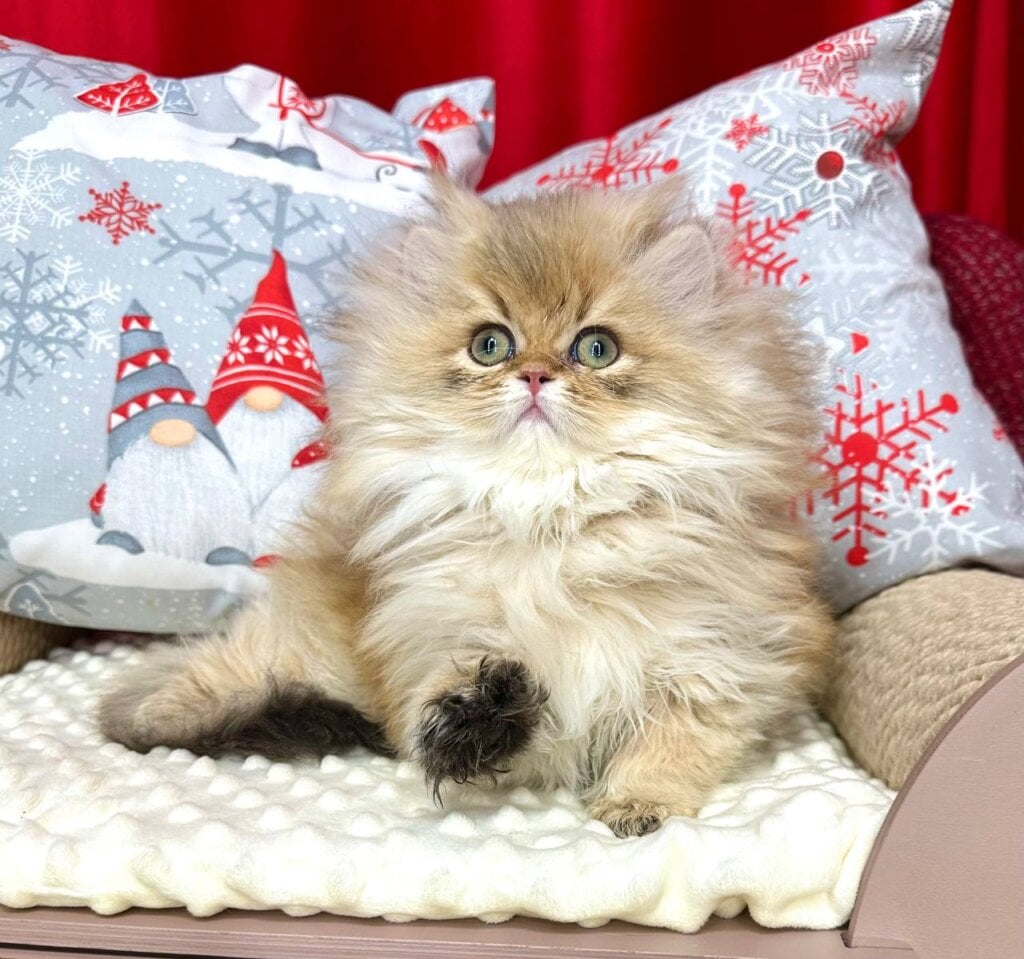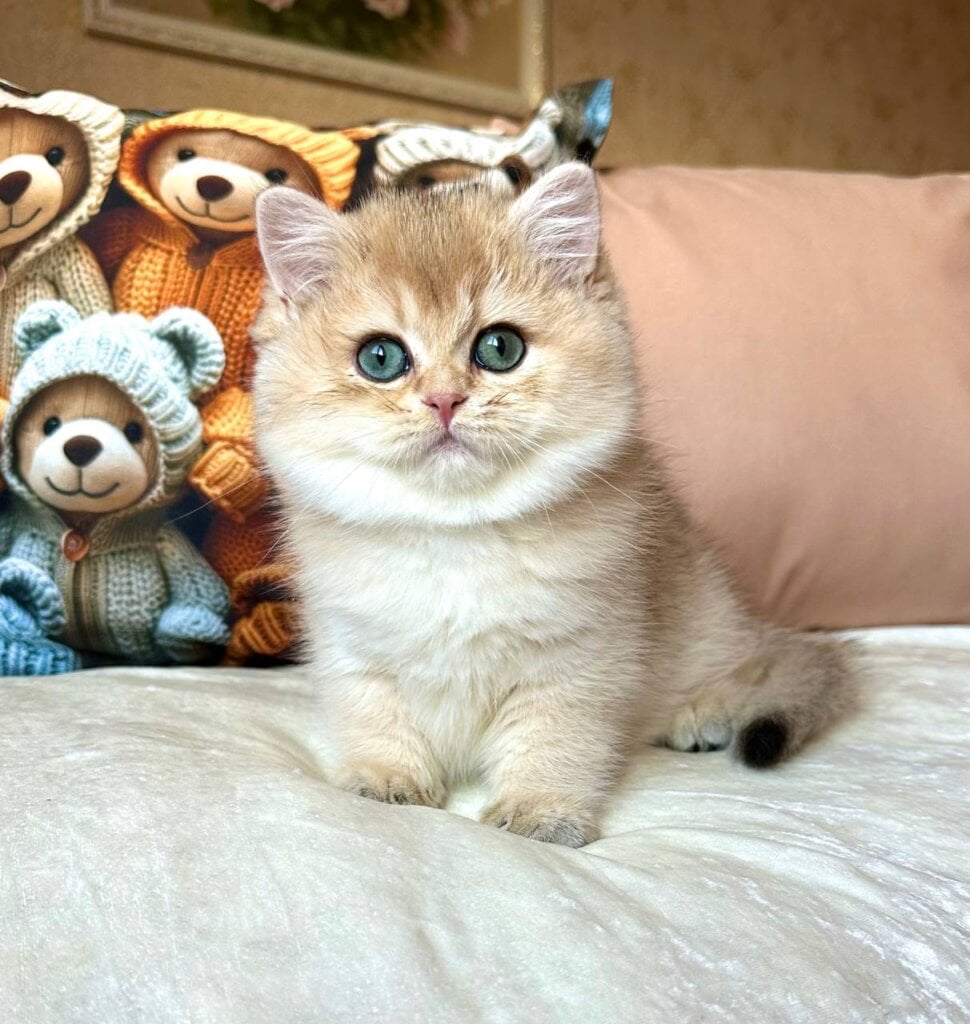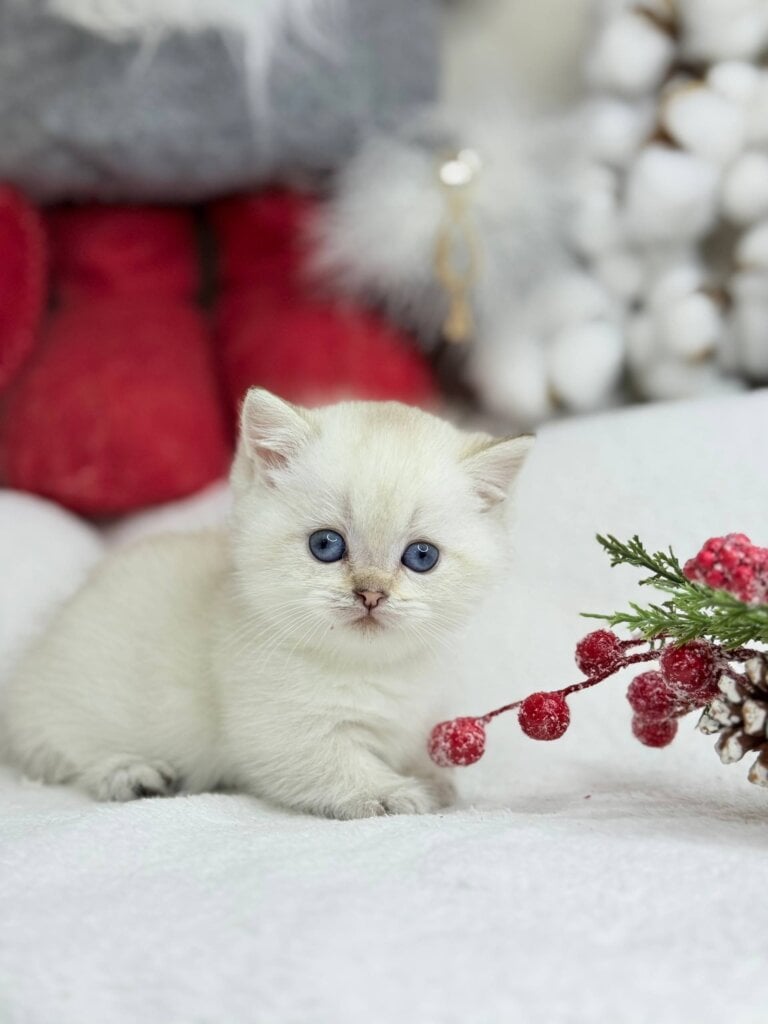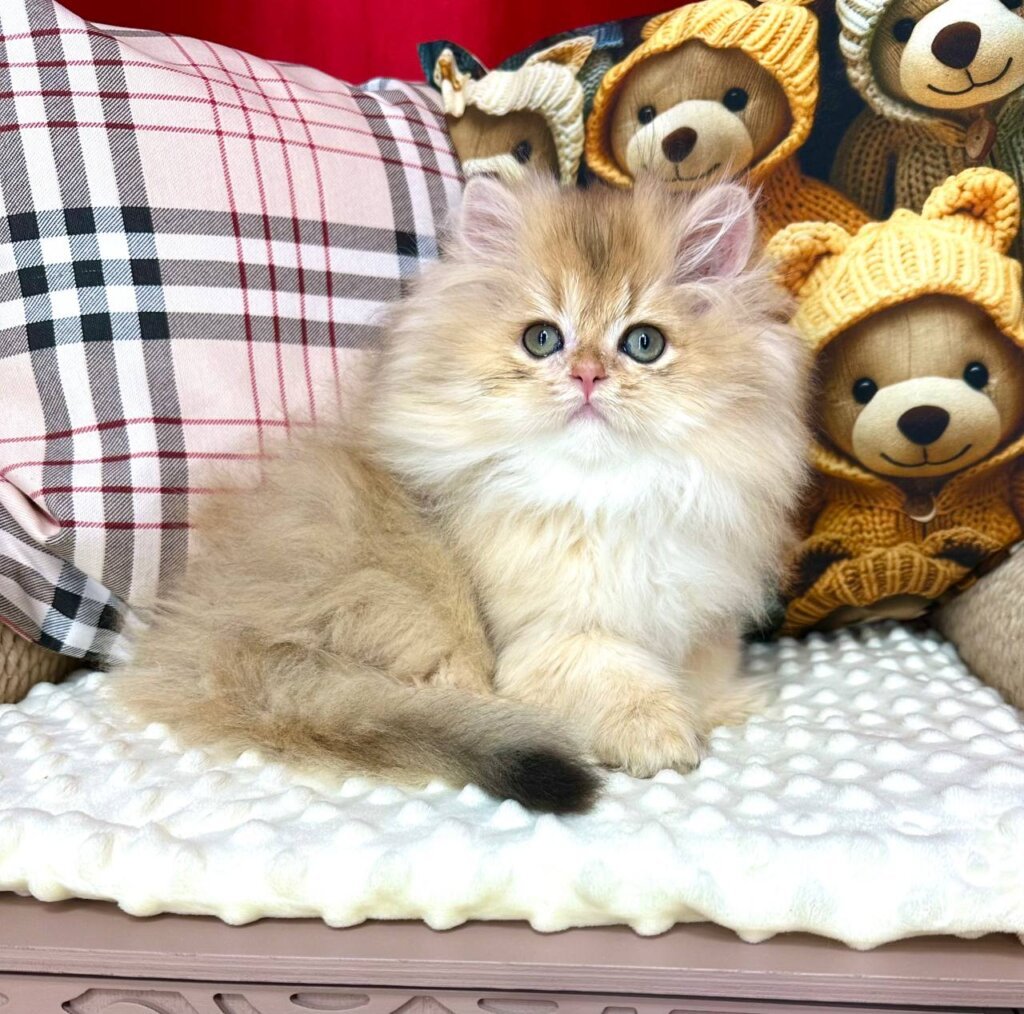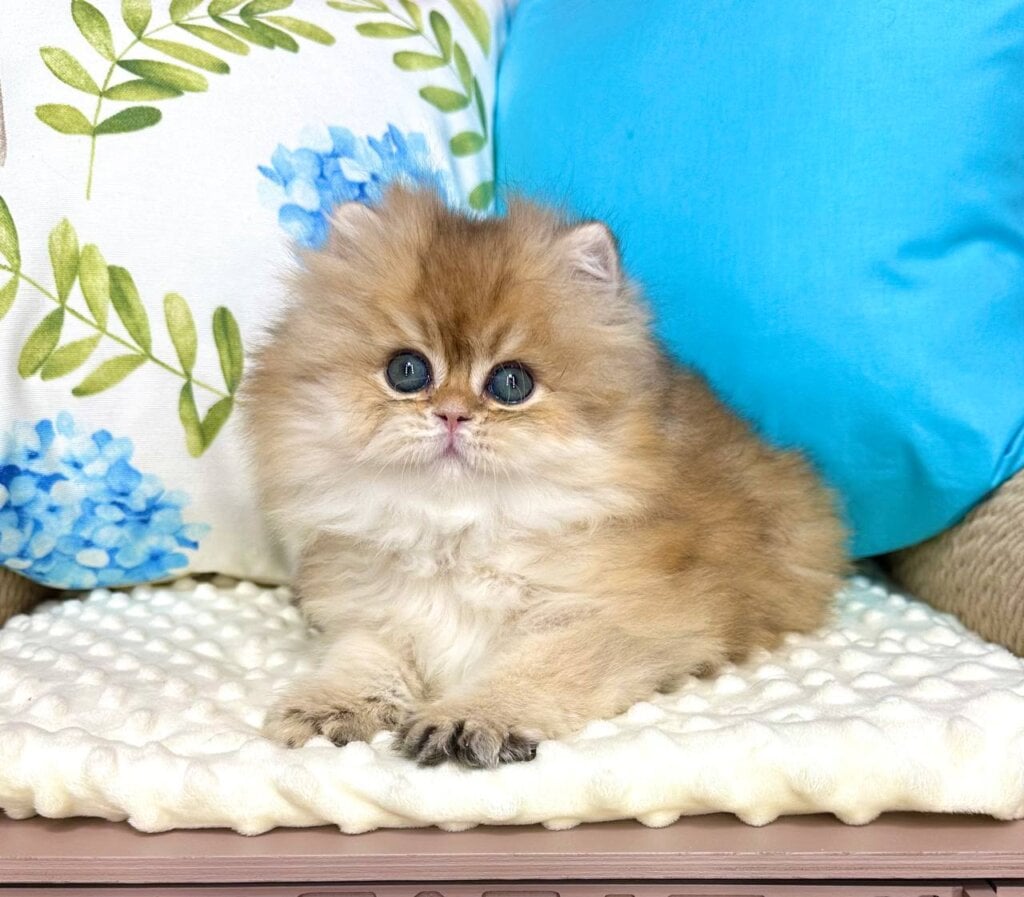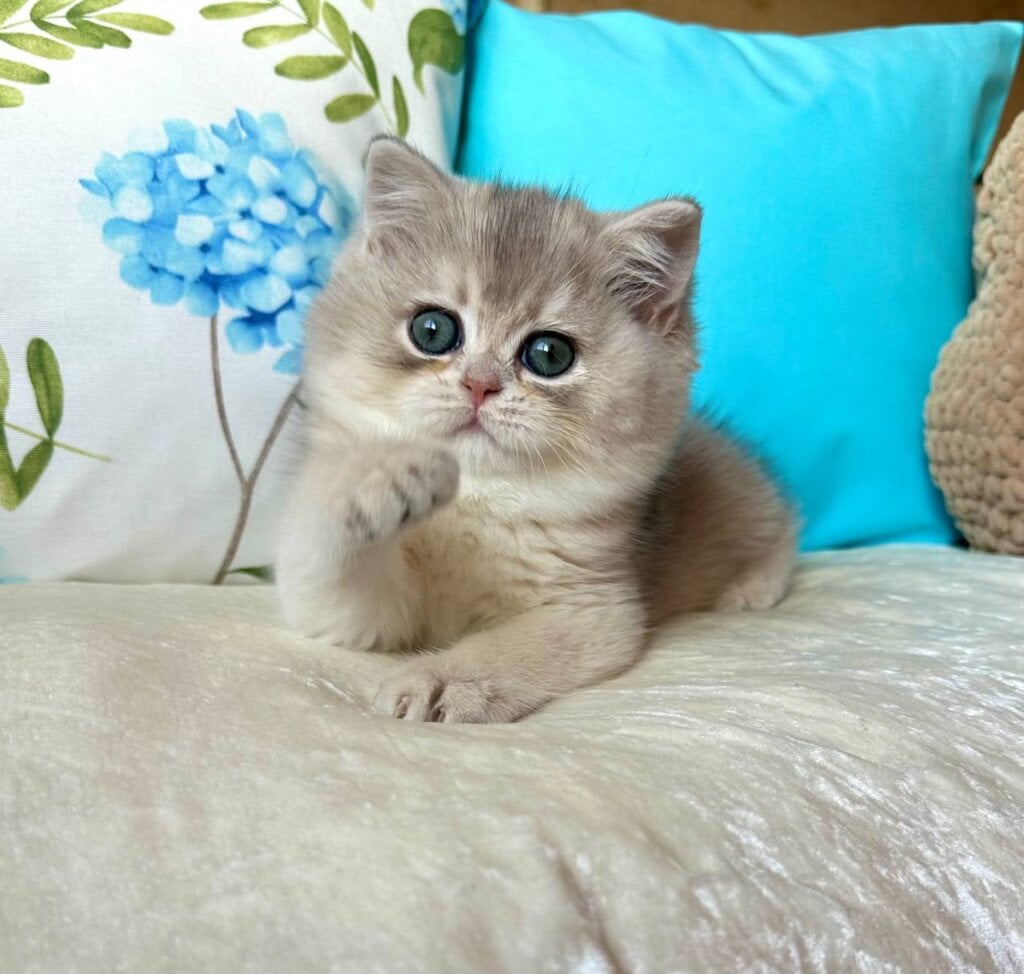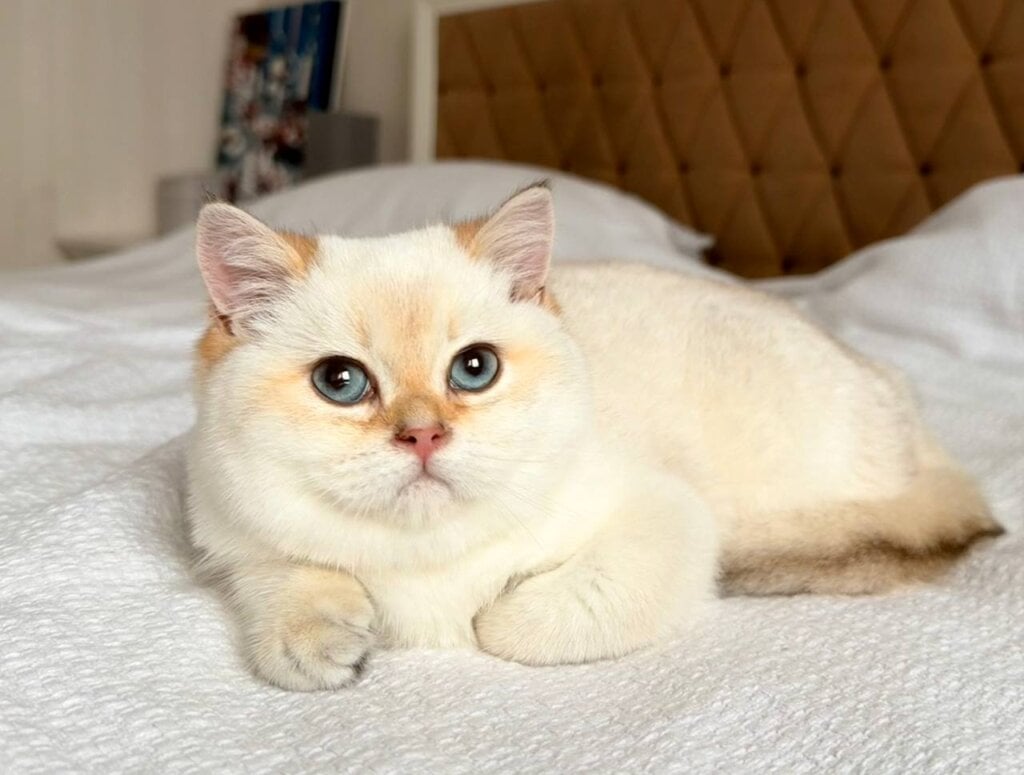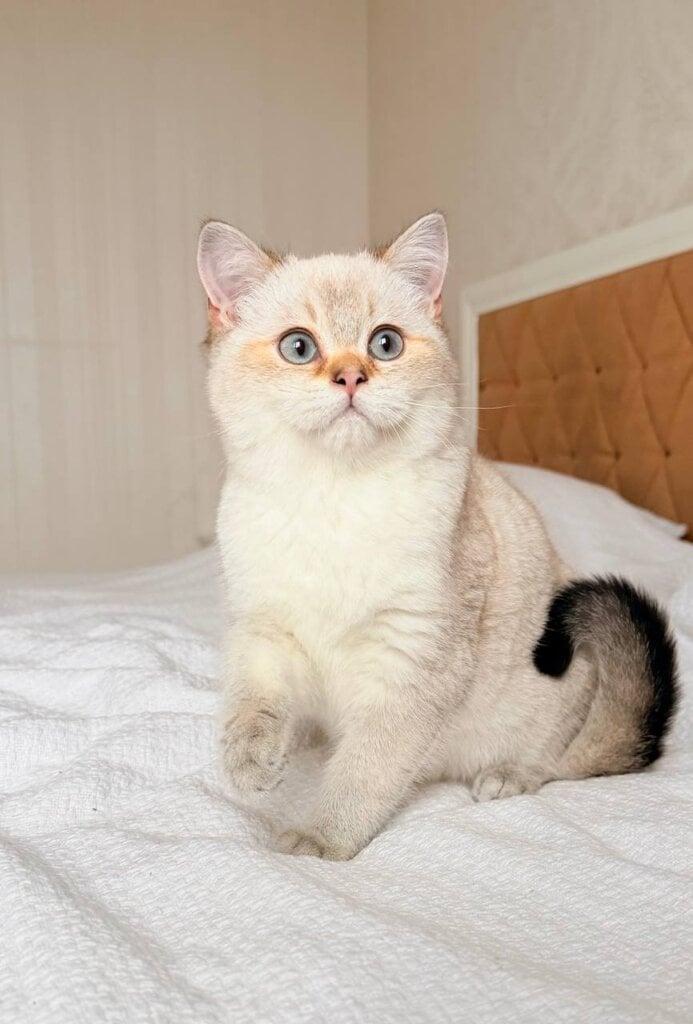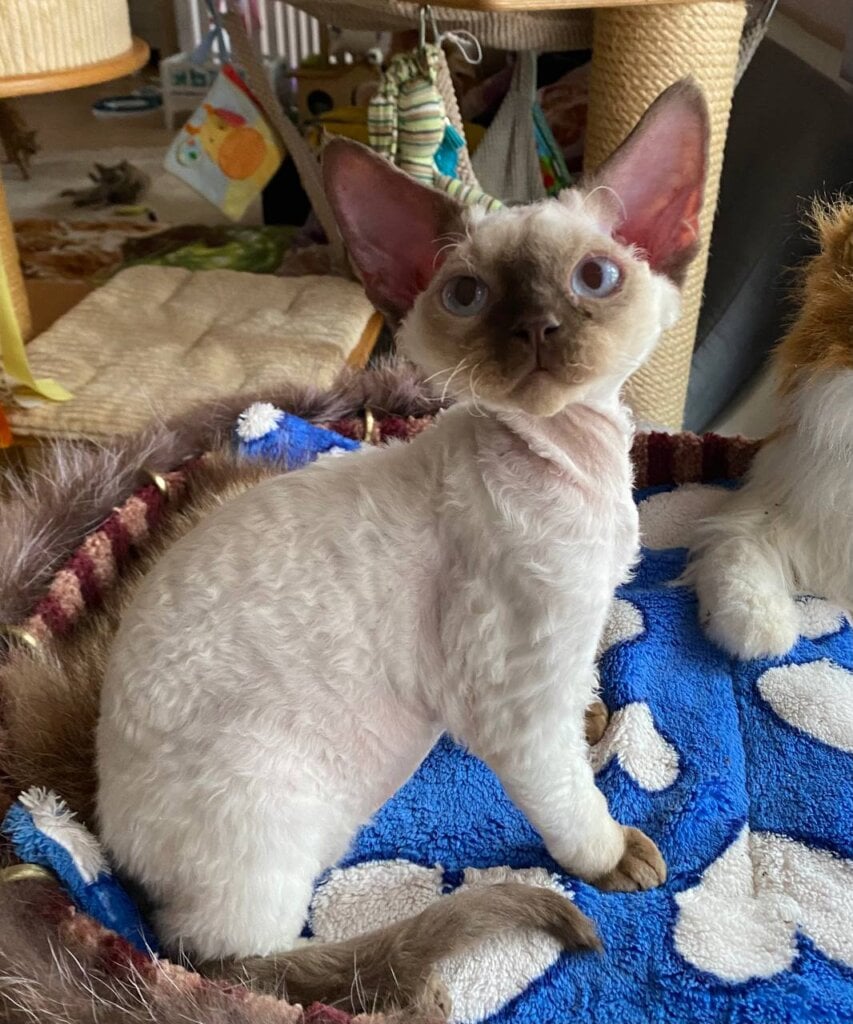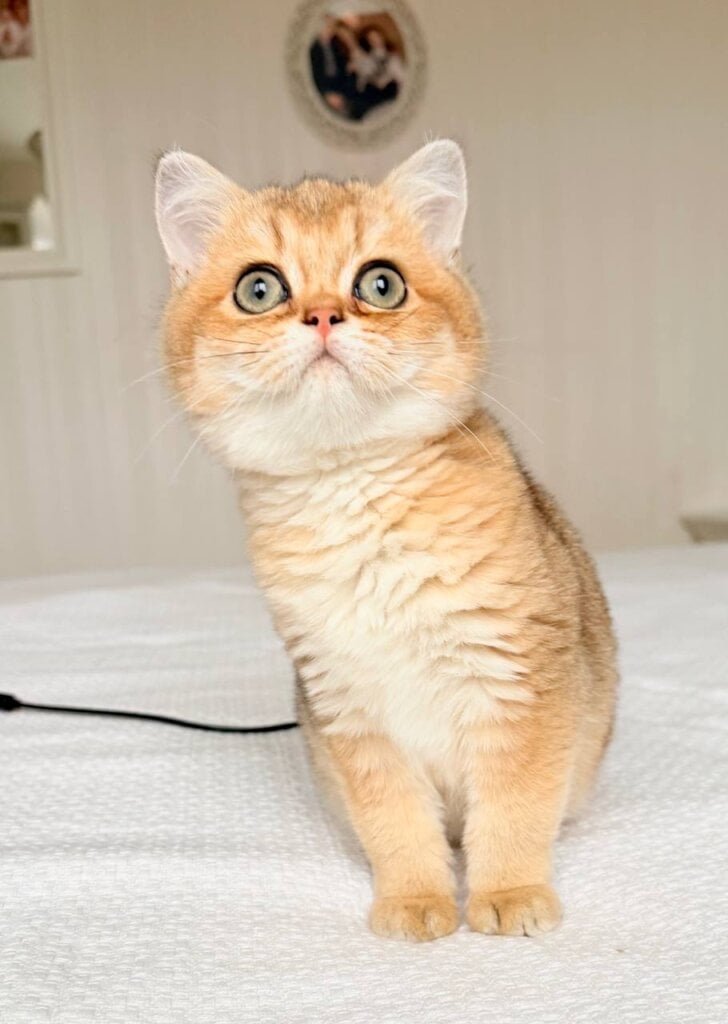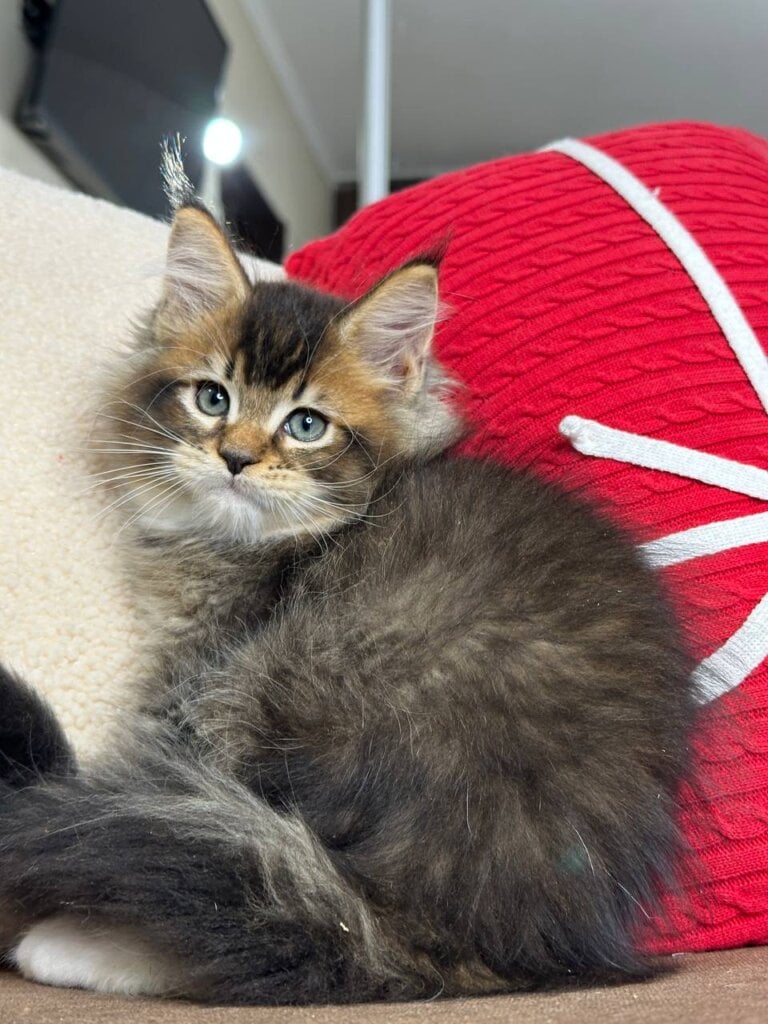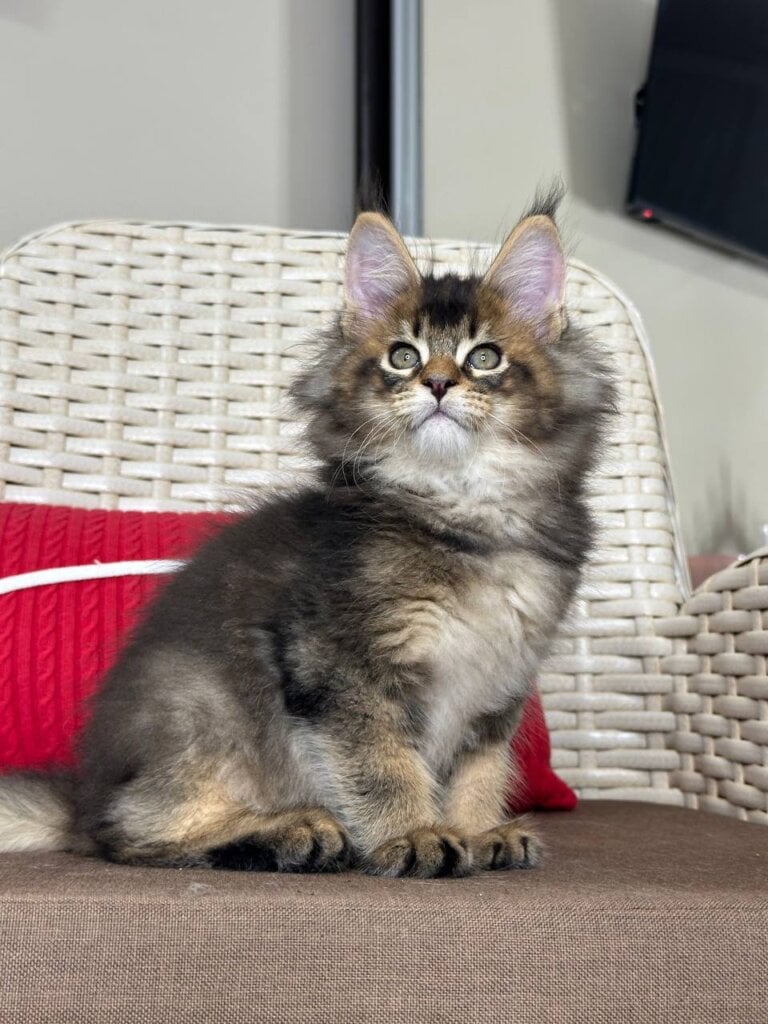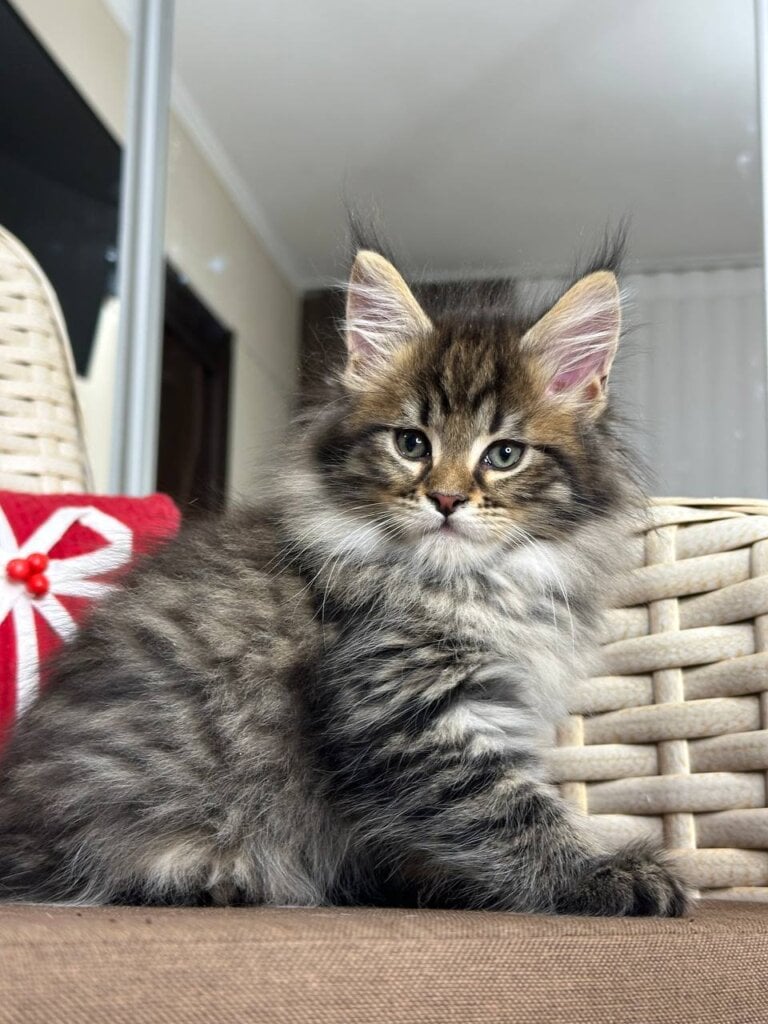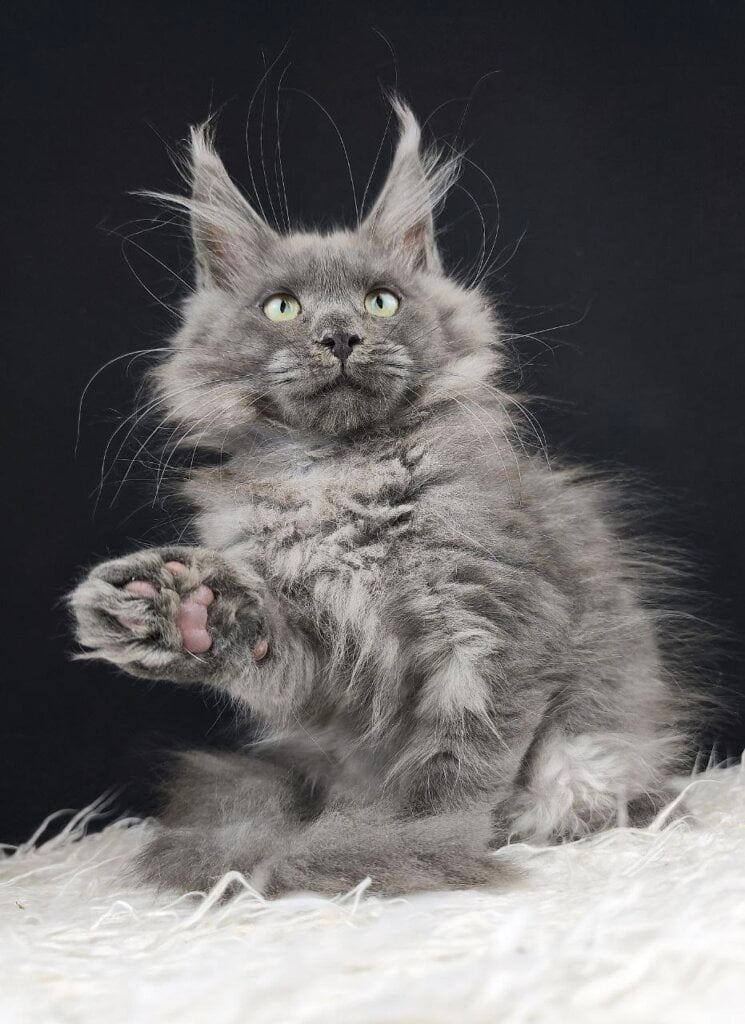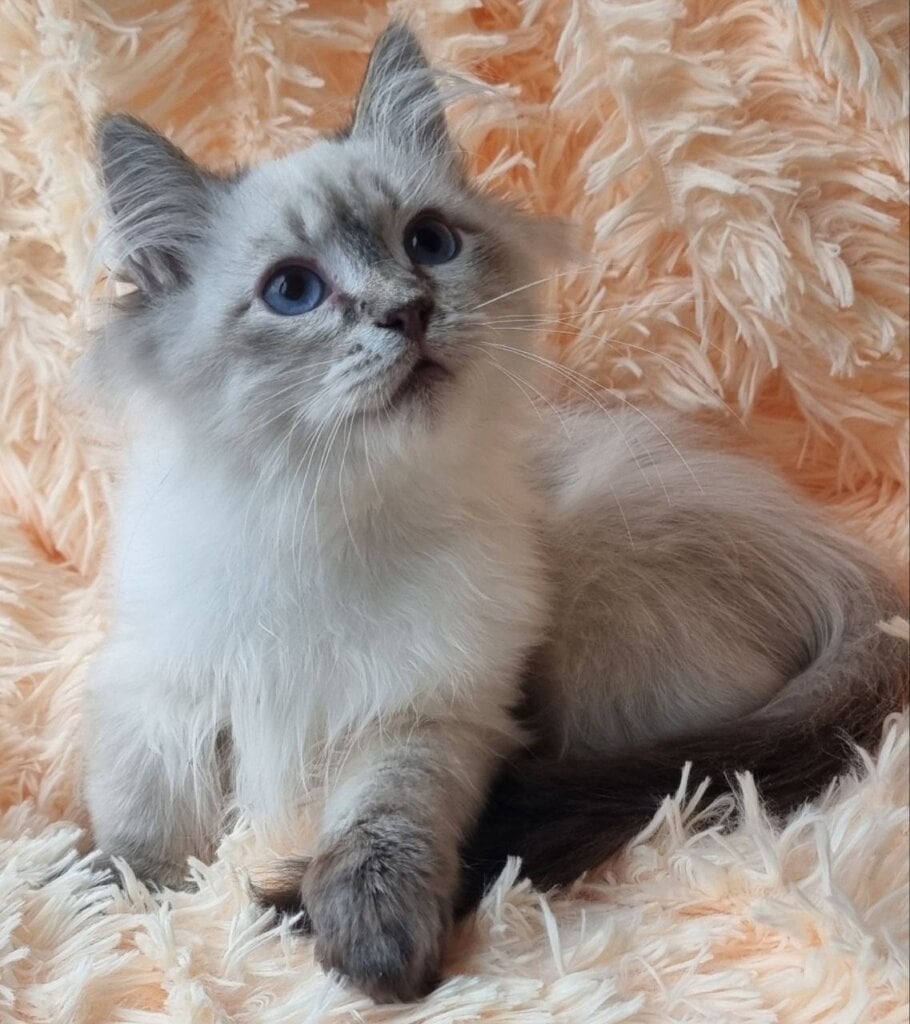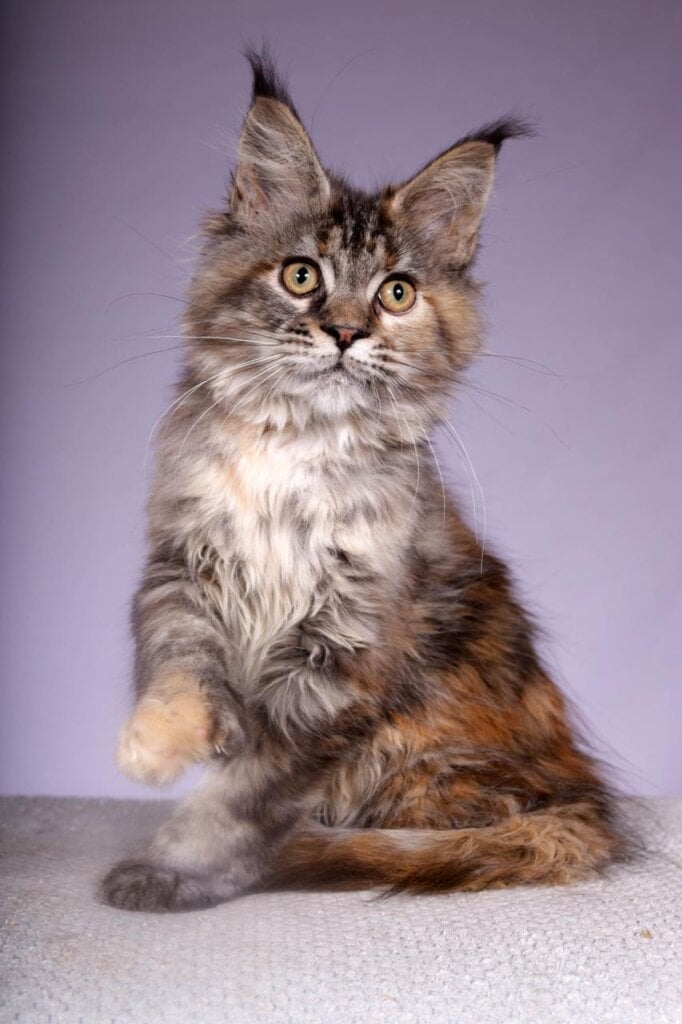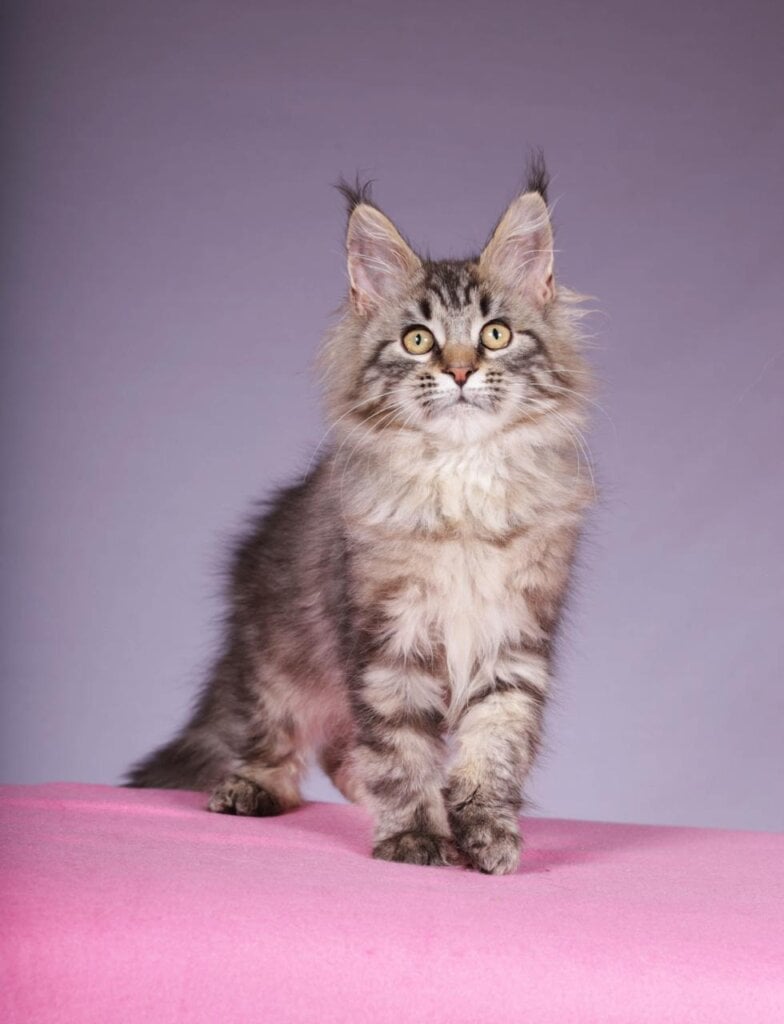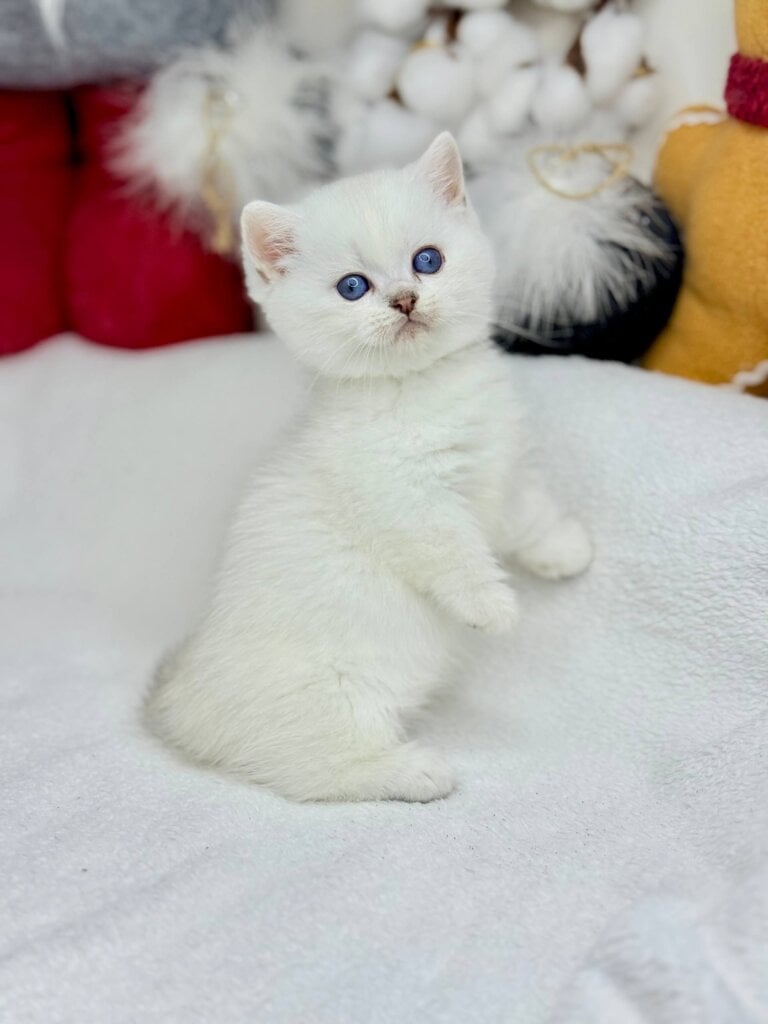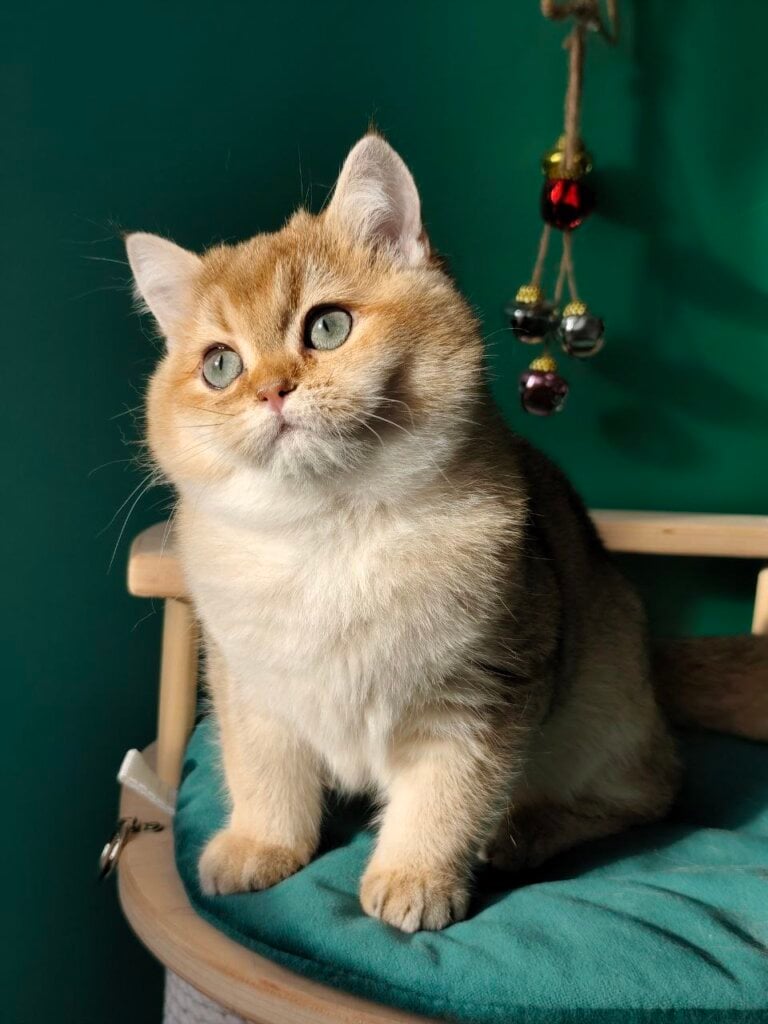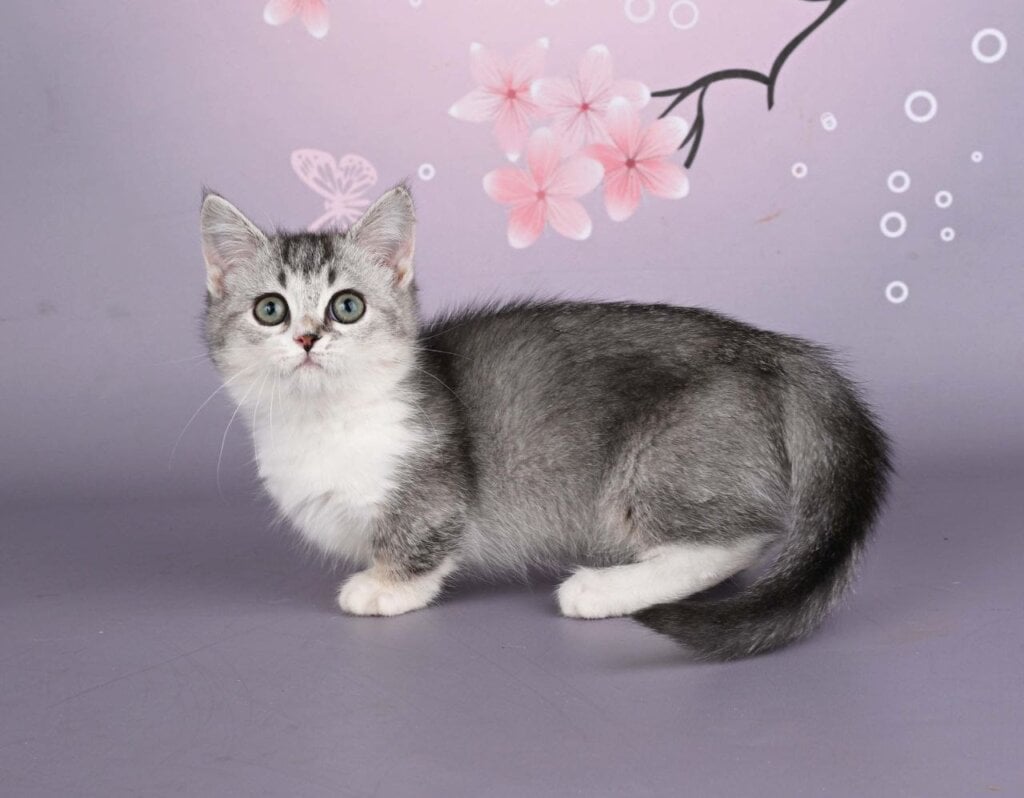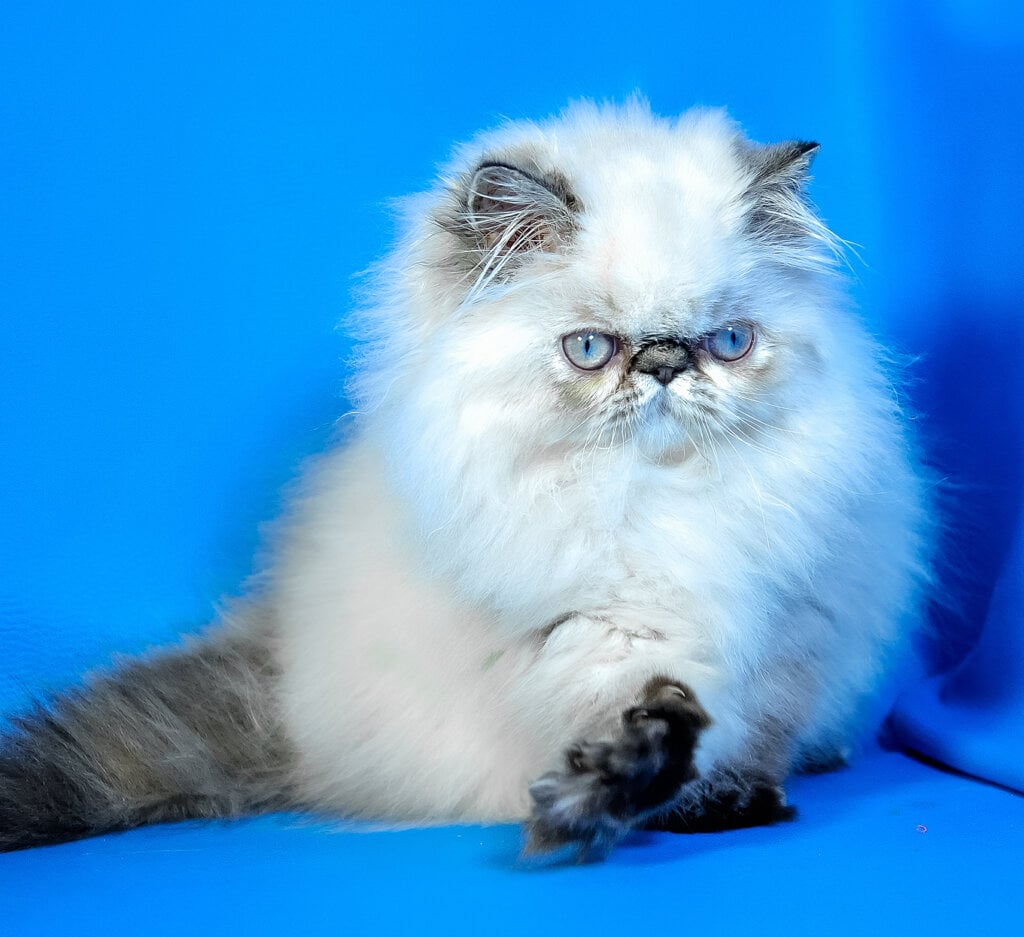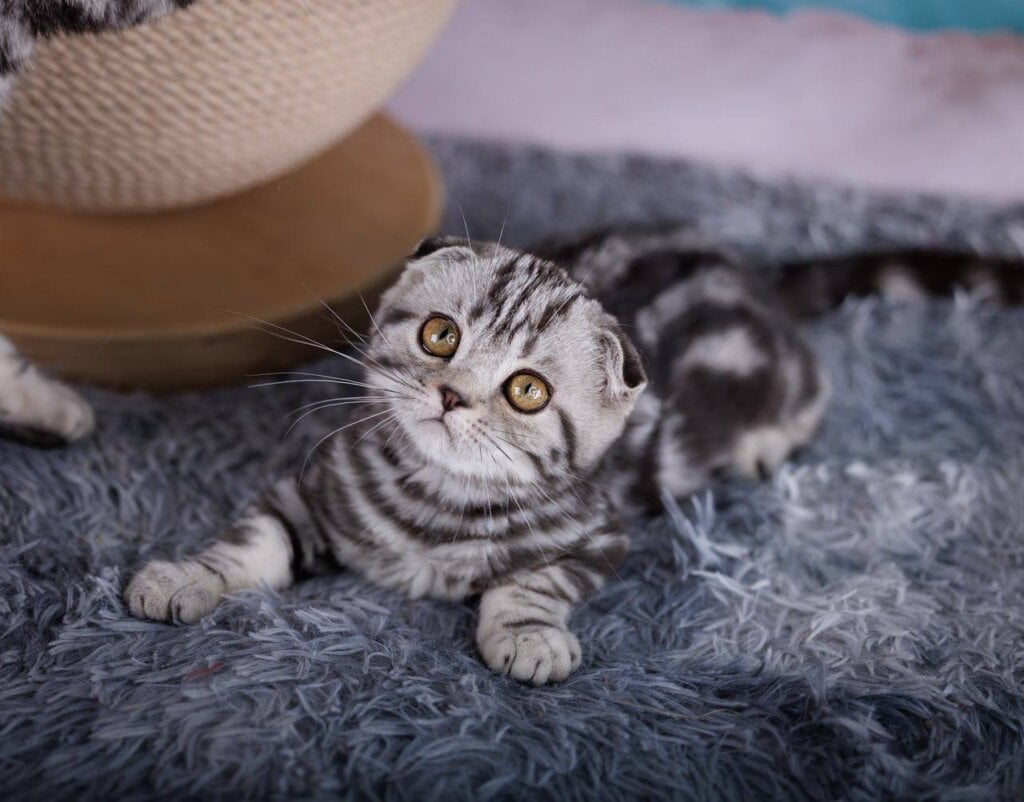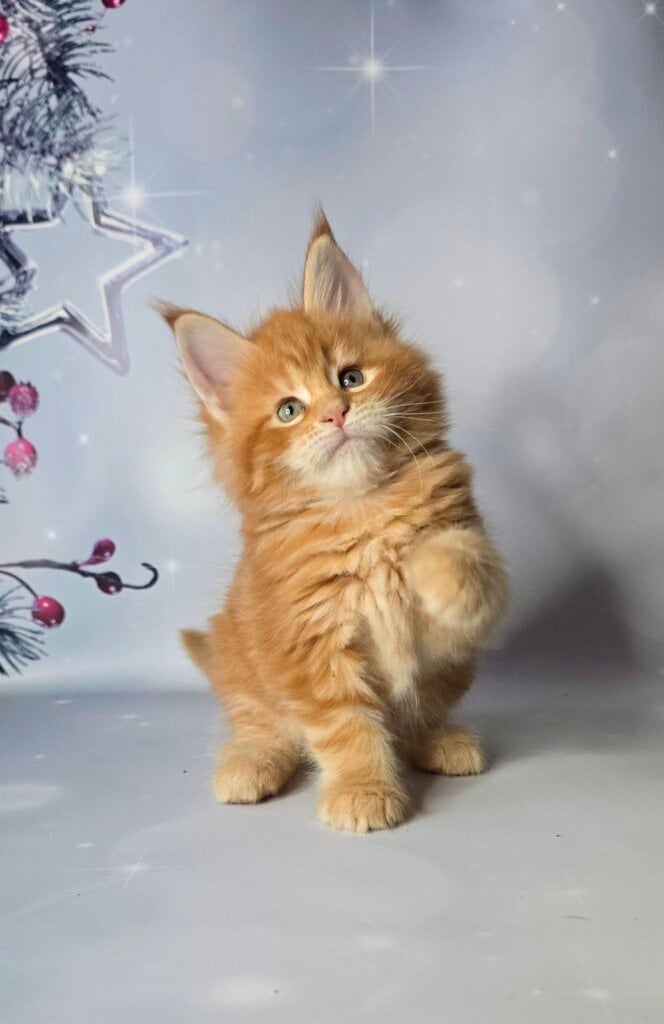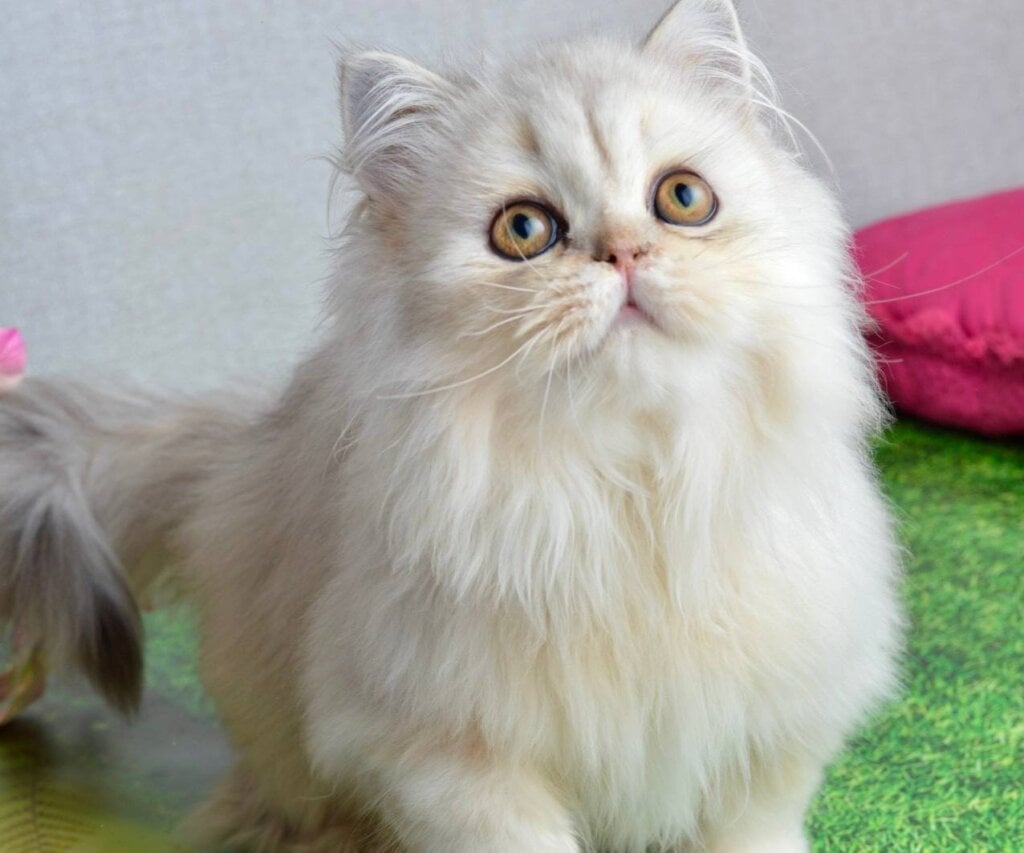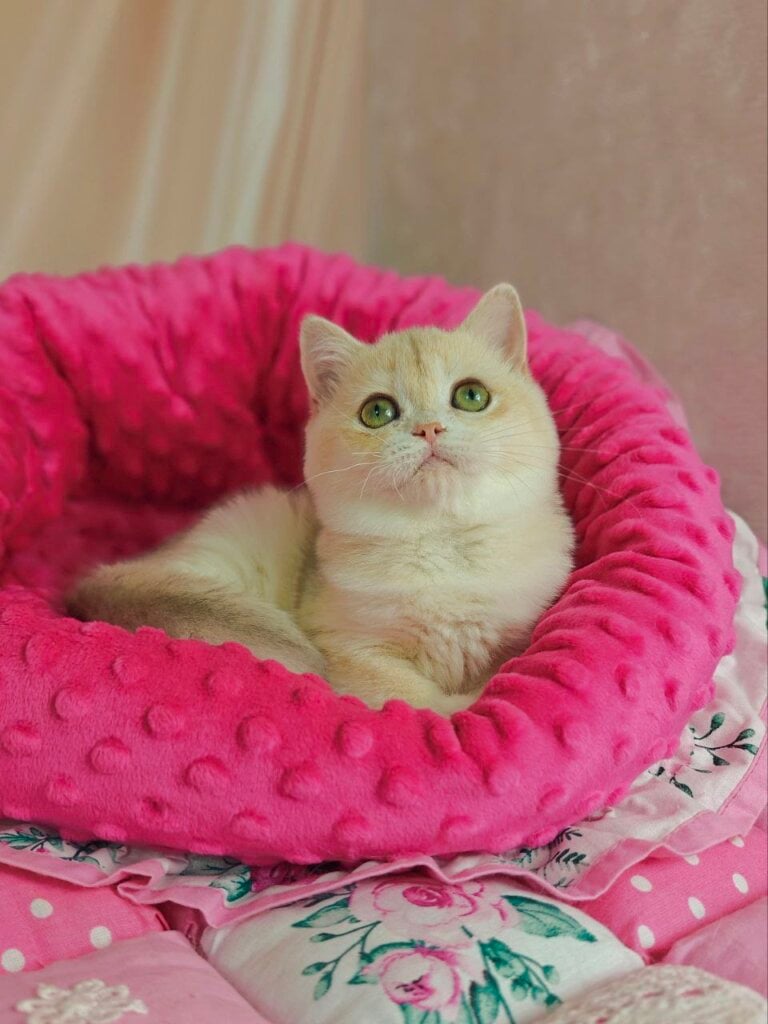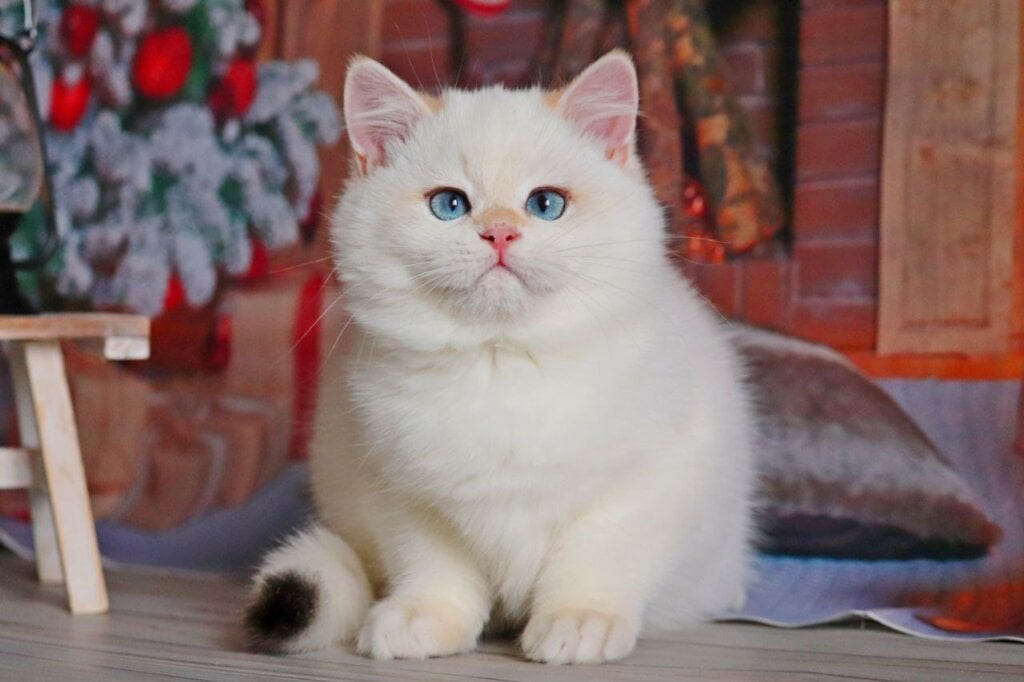Scottish Fold ears clean with a soft cotton pad and a safe cat ear cleaner. Scottish Folds have folded ears which require constant maintenance, as grime and wax accumulate quickly. Regular checks prevent infections and keep your cat comfortable. Regular cleaning maintains their ears clean and healthy. It really helps to know the right way to clean. Then, find out how to keep your Scottish Fold’s ears in tip top condition.
The Fold’s Unique Anatomy
Scottish Folds are distinctive for their plush, rounded appearance, due to their abnormal ear shape. The fold in their ear is caused by a genetic mutation that modifies cartilage function. This minor genetic variation makes a huge difference in their health and care. Understanding how this anatomy functions can assist families in maintaining their cats’ happiness and safety.
The Genetic Fold
The fold is more than an adorable characteristic–it’s the outcome of an evolutionary gene shift. It acts on cartilage, causing the ear tip to fold forward and down. There are other kittens who come out with straight ears, but they have that gene as well. That is, even straight-eared folds can and do pass the gene to kittens.
That very gene that gives the Scottish Fold its signature appearance creates health issues. It’s associated with osteochondrodysplasia, a condition that affects bone and cartilage development. This can result in stiff joints, pain, or difficulty moving – particularly when both parents have folded ears. For this reason, ethical breeders exclusively breed folded-eared cats with straight-eared partners to reduce the risk of extreme health complications.
Airflow Restriction
Folded ears do more than just alter appearance-they obstruct airflow in the ear canal. A normal cat’s upfolded ear allows air to circulate, drying the inner ear. The Scottish Fold’s ear, folded over, constricts the opening and prevents air from permeating deep within.
This restriction in airflow facilitates the retention of moisture, particularly in hot or humid environments. Even routine activities like taking a bath or muggy days can exacerbate the situation – as the ear can’t dry out quickly. Several Scottish Fold owners observe their cats shake their heads more frequently or scratch at their ears when air can’t circulate.
Debris Accumulation
This skinny fold shape traps more dust, wax and other crap than a straight ear would. Dirt that would typically fall out, gets caught in the folds and creases. Wax, in other words, piles up speedily and must be scoured on the regular schedule-sometimes every 7-10 days.
For instance, a Scottish Fold in an active household or with other animals may accumulate additional debris and fur in their ears. If left unchecked, this accumulation can cause pain or even hearing loss. Owners have to check their cat’s ears frequently and use mild, vet approved cleaners to keep them clear.
Infection Risk
A Scottish Fold’s ear is cozy, warm and moist with very little circulation of air. This provides it with an ideal environment to multiply bacteria and yeast. These infections can form rapidly and are sometimes difficult to detect early on.
Watch for early signs such as redness, swelling or bad smell from the ear. If these symptoms appear, immediate veterinary care is required. Frequent cleaning mitigates the danger, but owners need to remain vigilant. If left unchecked, infections can spread and cause permanent damage.
How to Clean Scottish Fold Ears
Scottish Folds, with their folded ears, require more regular ear care than most cats. That special shape can trap debris, wax, and moisture, so cleaning isn’t just grooming-it’s keeping your kitty healthy and cozy. By checking their ears weekly, you’re smart, and cleaning them every 7 to 10 days prevents bigger problems for these sweet natured pets.
1. Preparation
Preparing your Scottish Fold makes it all easier. Begin by allowing your cat to smell the ear cleaner and cotton pads, so it’s not as frightening. Before you ever attempt to clean, spend a few sessions simply rubbing their ears with your fingers, no products at all-this establishes trust and helps keep your cat calm when you actually need to clean. Select a mild ear cleaner designed for cats, clean cotton pads or soft gauze and keep a towel nearby just in case your cat becomes wriggly.
2. Positioning
Choose a calm, well-lit location where your cat is comfortable. Most of us find it easiest to put the cat on your lap or a soft towel on a table. If you have a wriggly cat, wrap them up in a towel, with only the head sticking out. This holds your cat in place and prevents you from getting scratched. Some cats fare better if you have a second person assist with holding, however, many Scottish Folds are chill enough on their own if you take it slow.
Attempt to keep all of your supplies at hand-do not walk away, once you start. Grab your cat’s head firmly but not too tightly. Some soft, calm words and gentle strokes on the head can help your cat relax and make the whole process less stressful for both of you.
3. Application
Administer the ear cleaner according to directions on the bottle. Typically, you’ll have to insert a few drops down the ear canal. Try to reach the ear base, not the ear flap. Be careful not to let the bottle tip actually touch the ear-this keeps things clean and prevents germs from spreading. Most cats will shake their head a bit after you apply the cleaner, which is expected. It aids in loosening dirt and wax within the ear.
Depending on the product, wait 1-5 minutes before proceeding. This provides the solution time to dissolve any gunk. For Scottish Folds, regular cleanings like these keep their distinctive ears clear of gunk and catch potential problems before they escalate.
4. Massage
Use your thumb and finger to massage the ear base for roughly 20–30 seconds. This aids the cleaner in getting in to all those creases. Soft massage dislodges wax and dirt and is easier to wipe away.
Don’t hurry! If your cat appears distressed, take a breather and try once more. A little patience is miles.
5. Wiping
Grab a cotton pad and gently swiping the inside of the ear flap and entrance of the canal. Don’t shove anything inside-just clean what you can see. Apply a new pad to each ear.
Cease if you notice bleeding or your cat appears to be in pain. The majority of foldies are going to be just fine with gentle care.
If the ear appears clean, you’re finished. If it’s still a bit dirty, you can always repeat the process once. Be on the lookout for redness, swelling, or a funky odor-these signs indicate it’s time to see your vet.

Choosing Safe Solutions
Scottish Folds are one-of-a-kind cats that require additional care due to their folded ears. Their ear shape can hold dirt or wax and sensitive skin so gentle cleaning is occasionally required. Over-cleaning can stress the cat, so when and how are key.
Vet-Approved Cleansers
The safest way to clean your Scottish Fold’s ears is with a cleanser your vet suggests. They specialize in pet products with tried and tested formulas. They assist in dissolving wax and dirt without stinging or inflaming. Find a liquid ear cleaner with a mild, water-based formula. Steer clear of anything with alcohol or strong chemicals.
Use a clean cotton ball or gauze pad, never cotton swabs, to remove dirt once the cleanser is applied. Swabs can poke the ear canal or push debris further inside – potentially causing injury or infection. Most Scottish Fold owners discover that once every 7 to 10 days cleans up nicely, but be sure to check your cat’s ears first. If they appear clean and healthy, save yourself the stress and skip the cleaning.
What to Avoid
Certain items can damage your Scottish Fold’s delicate ears. Don’t use hydrogen peroxide, vinegar or baking soda concoctions. These can dry or hurt the ear! Strong scents and essential oils are not safe and can cause allergies.
Don’t clean your cats ears unless there is dirt, wax or smell. Excessive cleaning can degrade the ear’s natural oils and lead to irritation. Keep an eye out for signs of discomfort, such as scratching or shaking the head, as this could indicate an ear issue that requires veterinary attention.
Creating a Safe Environment
Providing your Scottish Fold a safe environment extends past ear care. Choose toys that won’t shatter into shards or have dangling cords. This keeps them from choking or chipping a tooth. Provide your cat with fresh water, nutritious kibble and a warm bed. Scottish Folds can have joint issues – so collaborate with your vet to establish ongoing checkups for early indicators.
When on the go, opt for a tough carrier. This keeps your Scottish Fold secure and helps reduce anxiety on visits to the vet or when traveling.
Routine and Prevention
Regular care ways trust and your cat healthy. Keep up with regular vet visits and be on the lookout for changes in your Scottish Fold’s ears, movement or mood. Choosing safe solutions – early care are best to keep your kitty happy.
Recognizing Ear Problems
Scottish Folds have distinct folded ear flaps which can collect moisture, wax and debris. These characteristics put them at a higher risk for ear issues compared to other breeds of cats, such as Persians. Recognizing the symptoms early can save your cat a lot of pain and alleviate impending problems with emergency intervention. Routine checks and cleaning at home help keep ears healthy and clear of debris.
Visual Signs
Examine the interior of your feline’s ears. Normal ears are light pink and clean, slightly waxy. If you notice dark, brown or black debris, this may indicate excessive wax or even ear mites. Ear mites appear like coffee grounds and are dry, whereas wax is sticky and wet. Swelling, redness or scabs on the ear flap should never be overlooked. Other Scottish Folds have extra fur within their ears making it more difficult to spot buildup. A swollen ear flap (called an aural hematoma) is a red flag-typically from scratching or shaking the head. If you see wounds or thick, crusty skin, your cat may have an infection or allergies.
Behavioral Clues
If your cat swats at their ears or shakes their head excessively, pay attention. A lot of cats will scratch or rub their ears on the furniture or floor when they are uncomfortable. Tilting the head to one side is yet another powerful hint, suggesting pain or an imbalance from an ear infection. Excessive scratching can cause skin wounds or a swollen, blood-filled ear flap. Other cats, like my Furr, retreat or get cranky when their ears ache. If your Fold starts changing habits or won’t let you touch its head any longer, inspect the ears immediately.
Odor Indicators
Healthy cat’s ears aren’t stinky. A stinky, foul smell is a giant red flag. Infections tend to have a yeast or sour smell. If you detect a sweetness, mustiness or rotten smell, then it’s time to look closer. Ear wax that smells strong or funny, particularly if combined with discharge, indicates a more serious condition. Routine cleaning gets you to notice these changes early. As cats get older, ear checks should occur more frequently, at least every six months, or sooner if your cat is susceptible to issues.
Establishing a Routine
Establishing a routine is a necessity for Scottish Folds, and honestly any cat with folded/unusual ear shapes. Their floppy ears tend to trap dirt and wax – so they need some extra assistance to keep clean and healthy.
Correct Frequency
Not all cats require the same treatment. Most Scottish Folds do best with an ear check once weekly. If you spot dirt or wax, wash them immediately. Certain cats, particularly those with more wax or tighter ear folds, may require this service every 7-10 days. Others, with less wax, can go two weeks or more between cleanings. Monthly checks are a good baseline if your kitty doesn’t have dirty ears very often, but clean only when there’s something to clean. For instance, certain Sphynx cats require washing once a week whereas a Maine Coon could potentially last a month or longer. Begin with weekly for your Scottish Fold, then adjust as you learn your cat’s requirements.
Positive Reinforcement
Acclimating your cat to ear cleaning is a gradual, consistent effort. Start by stroking and rubbing their ears at cuddle time, long before you ever pull out any cleaning apparatus. Speak in a soothing tone and reward your cat with tiny tidbits or their most beloved toy after a few seconds of ear rubbing. Soon, most cats will have learned that ear checks are nothing to be afraid of. If your Scottish Fold is nervous, be sure to keep sessions brief and reward or treat after each phase-checking out, cleaning, finishing. It’s a way of establishing a trusting relationship and makes subsequent cleaning much easier for you both.
Monitoring and Adapting
It’s sensible to monitor changes in your cat’s ears over time. A few cats develop a tendency for more wax as they get older, or after a diet change. If you observe more frequent buildup, change to weekly cleaning. If your cat’s ears remain clean, increase the intervals of cleaning. Keep an eye out for redness, foul odor, or excessive scratching-these may indicate a trip to the vet is in order.
Making It Part of the Week
Attempt to tack on ear checks to something you already do, like brushing your kitty or trimming nails. Keep supplies-like cotton pads and a safe ear cleaner-at the ready, so you don’t miss a week. If you persist, both you and your cat will feel less anxious, and ear health will simply become part of your regimen.
A Vet’s Role in Ear Care
Because of their curled ears, Scottish Fold cats are especially susceptible to ear issues. A vet’s role in helping you keep those special ears clean and healthy. Vets understand that breed characteristics signify that certain cats require more attention than others. For Scottish Folds, vets advise on the frequency of ear checks and cleaning, tailored to each individual cat. Certain folded ears cats or even hairless breeds get wax buildup quicker. A vet will consider your cat’s ear type and assist in establishing an appropriate cleaning schedule.
Vets check for any problematic indicators, such as mites, excessive wax or inflammation. They know what’s normal gunk and what needs to be treated. If you see your cat scratch, shake his/her head, or you see any discharge, a vet examines for infection or mites. Early assistance provides a greater opportunity to prevent a minor problem from escalating.
The cleaning itself matters a lot. Not all are safe for cats–some can actually cause pain and swelling. The vet will demonstrate what to purchase, how much and how to administer it in the ear. Scottish Fold ears are very soft and they can be damaged by aggressive cleaning. Vets will teach you how to wipe gently and what to use, such as soft cotton pads or cloth. They can demonstrate the safest method of restraining your cat so that neither of you get frazzled.
A vet’s exam is a complete examination. They peep deep in the ear with special instruments, investigating for inflammation, foul odor, or any concealed foreign bodies. If there’s excessive debris or mites, the vet might perform a thorough cleaning with appropriate equipment and medication. For most owners, this is difficult to do at home, so it’s good to trust the vet with these bigger tasks.
A large portion of a vet’s job is educating. They educate you to what to look for in between visits – scratching, redness, or odor. If you know the warning signs, you can book a vet visit before things escalate. They’ll assist you in establishing a regular, home-based ear inspection and cleaning routine, so you spot issues early.


